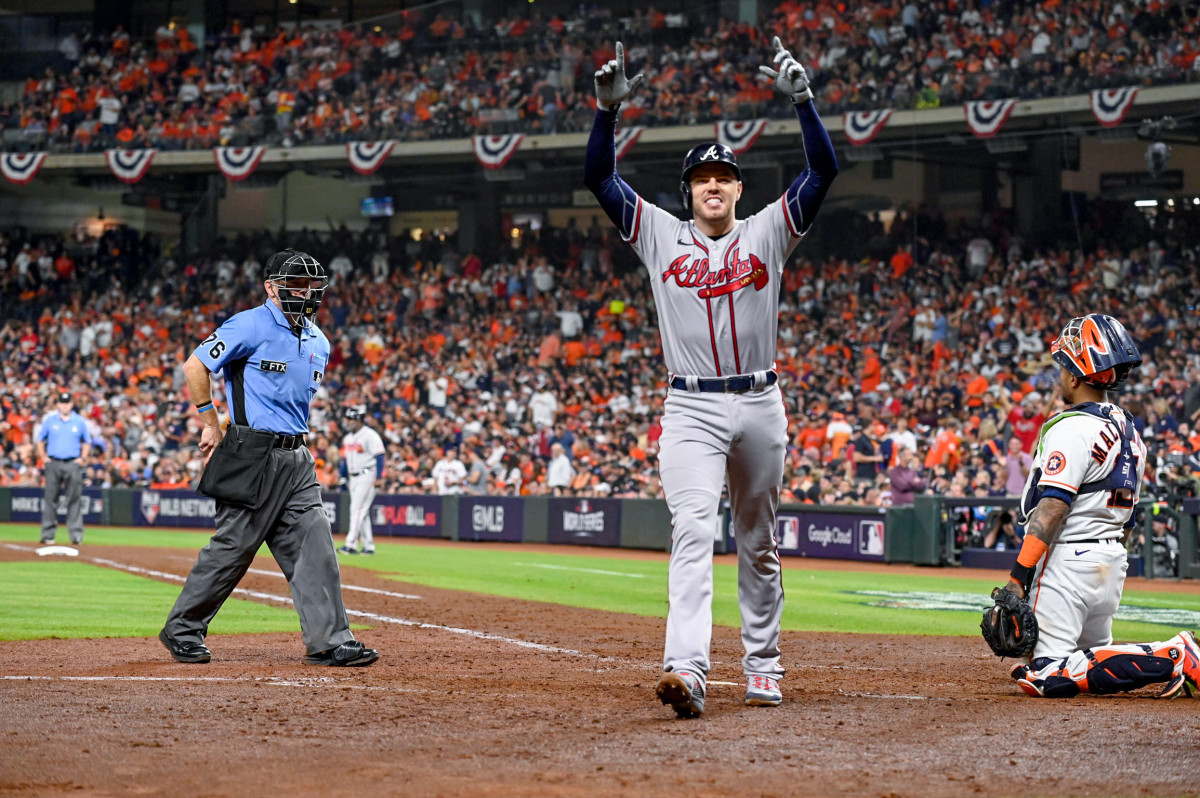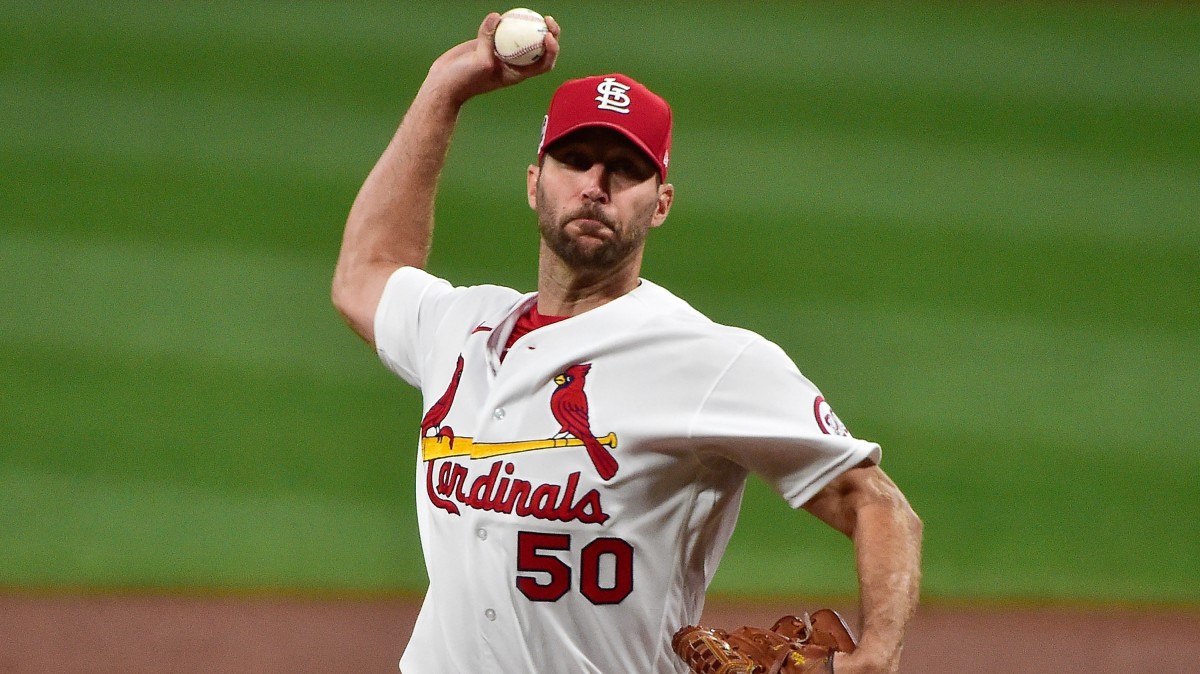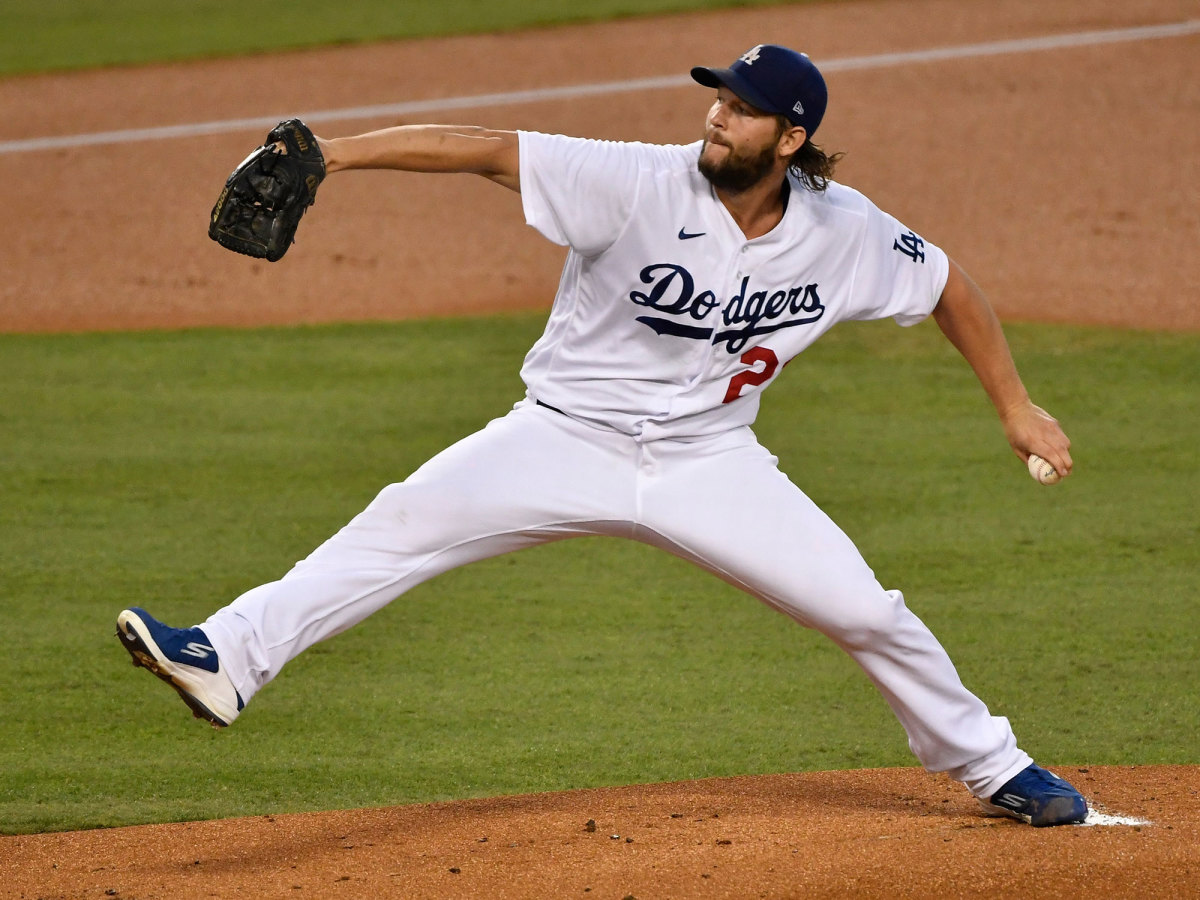The Most Pressing Needs of 2021’s National League Playoff Teams

After recent offseasons featured MLB front offices operating at a glacial pace through much of the winter, many teams were keen to make a splash before the collective bargaining agreement expired. More than half of our top-50 free agents were signed by the time the lockout began on Dec. 2. Nonetheless, even the best teams from last season still have at least one clear area that needs a facelift ahead of the chase for the 2022 World Series title.
For now, we can only dream of the frenzied postlockout flurry of signings and trades that will surely take place as GMs try to get their ducks in a row before spring training begins. With all transactions put on hold during the lockout, it’s a good time to examine how contending teams will approach the “second half” of the offseason once another CBA is agreed upon.
Today, we’ll tackle the biggest needs of the five National League teams who qualified for the playoffs last season. Next week, we'll cover their American League counterparts.
All projected payroll figures and record payroll figures are from MLB Trade Rumors.

Atlanta Braves: First baseman
We’ll start with the defending World Series champions, who as it stands have the most pressing issue to address: Freddie Freeman, the face of the franchise and the 2020 NL MVP, is still a free agent. And he unsurprisingly appears to be attracting the interest of the league’s most deep-pocketed franchises, according to The Athletic’s Jim Bowden. The Yankees have a clear opening at first base with Anthony Rizzo still on the market and Luke Voit’s future unclear amid swirling trade rumors. The Dodgers are a less obvious fit but could move Max Muncy to second and Trea Turner to shortstop to replace the departed Corey Seager.
It’d certainly make for a dramatic offseason story line if Atlanta lets its amicable leader walk away right after winning a championship. If that comes to pass, there are a few replacements available via free agency (Rizzo) or trade (Matt Olson, Voit). But none are likely to approach the contributions of the man Braves fans like to call “MVFree.”
LAWS: Braves Risk Wasting a Ready-Made Repeat Opportunity
Milwaukee Brewers: A big bat
The NL Central champions were a mediocre bunch on offense last season. They managed only six runs in their four-game division series loss to Atlanta, and ranked last among the 10 playoff teams and among the bottom third of the entire league in batting average (.233), slugging percentage (.396), OPS (.713) and wRC+ (91). Then, the Brewers watched as their 2021 home run leader Avisaíl García, key trade deadline acquisition Eduardo Escobar and half of its catching platoon, Manny Piña, signed with other teams in free agency before the lockout. President of baseball operations David Stearns partially softened those losses by acquiring former Red Sox outfielder Hunter Renfroe in a trade for Jackie Bradley Jr., who’d bombed in historic fashion during his lone season in Milwaukee, and two prospects. But the objective for the rest of the offseason should still be clear: upgrade the lineup.
That goal becomes especially obvious if the NL adopts the designated hitter. Milwaukee’s bench is full of platoon pieces and uninspiring options. The best Brewers reserve to promote would probably be Tyrone Taylor, but that’d leave them without a fourth outfielder. Kyle Seager would’ve been a great fit here if he hadn’t retired; even if the DH isn’t included in the next CBA, his presence would’ve pushed third baseman Luis Urías into the sort of super utility role for which he’s a better fit.
Stearns must maneuver without a lot of room to spare on salaries; after accounting for arbitration raises, the Brewers are already projected to nearly equal their franchise-record $123 million payroll, which was set in 2019. The best way forward may be making a trade for an underrated hitter like Miami’s Garrett Cooper, whose excellent exit velocity hints at a potential breakout. Cooper is entering his second year of arbitration and would come relatively cheap because he’s not projected to start for the Marlins. If team ownership grants greater payroll flexibility, a slugger amenable to a short-team deal such as Nelson Cruz or Michael Conforto—who may seek to reestablish his value after a disappointing 2021 campaign—would be a godsend.
Ultimately, the biggest variable on Milwaukee’s offense will be the production of Christian Yelich. The 2018 NL MVP was a below-average hitter by OPS+ (99) last season, an occurrence that can’t repeat itself if the Brewers are going to make some noise in October.
St. Louis Cardinals: Starting pitcher, shortstop
The Cardinals didn’t initially impress anybody with the acquisitions of Jon Lester and J.A. Happ at last season’s trade deadline. Sure, St. Louis was in sore need of starting pitching, but were those two aging lefthanders with ERAs over 5.00 the answer for a squad on the edge of postseason contention? The Redbirds got the last laugh after those graybeards worked out just fine. Now, with Lester retired and Happ lingering in free agency alongside former Cardinals starter Kwang Hyun Kim, St. Louis could once again look to add another arm to its rotation to join the newly signed Steven Matz.
This may not look like an Achilles heel at first glance; Matz appears primed to team up with Adam Wainwright, Jack Flaherty, Miles Mikolas and Dakota Hudson in a solid stable of starters. But there are concerns with each of those guys, ranging from Wainwright’s age to Matz’s awful 2020 and injury concerns for the other three after all missed significant time with shoulder/arm ailments in '21. With a projected payroll roughly $14 million under last season’s number, this seems like a good area to reinforce over the coming months. As the old adage goes, you can never have enough pitching.

The Cards could reunite with Kim, but he endured elbow issues of his own last year, and the coaching staff never seemed fully confident in the soft-tosser as a starter despite his solid surface-level stats. Zack Greinke fits the profile established by Lester and Happ as a wily veteran who could surpass expectations with St. Louis’s stellar defense behind him. If president of baseball operations John Mozeliak values velocity, lefties Carlos Rodón and Yusei Kikuchi are the only remaining free agents who flash above 95 mph on the radar gun.
St. Louis may opt to engage on the shortstop market. Edmundo Sosa performed reasonably well down the stretch after taking over the starting job from Paul DeJong, who mired below the Mendoza line amid his continued struggles against southpaws. Sosa, however, benefited from some batted-ball luck and doesn’t offer much pop. The Cardinals will likely let Sosa and DeJong battle it out, though, since anteing up for Carlos Correa or Trevor Story just doesn’t adhere to how the Cardinals typically operate—especially given DeJong is guaranteed $15 million over the next two seasons.
Sign up to get the Five-Tool Newsletter in your inbox every week during the MLB offseason.
San Francisco Giants: Starting pitcher, DH (?)
Even after adding Alex Cobb and retaining Anthony DeSclafani and Alex Wood from last year’s surprisingly elite rotation, the Giants could really use another starter if they hope to repeat as NL West champions. There figures to be some drop-off in going from the departed Kevin Gausman to Cobb, and Tyler Beede, a 28-year-old who last started in the majors in 2019, is currently penciled in as San Francisco’s No. 5 starter. The Giants were also very lucky last season when it came to pitching injuries, or a lack thereof. Their top-five projected starters all made at least 20 starts, with the still unsigned Johnny Cueto being the only one who didn’t account for at least 26. They will likely need more depth in '22.
The good news is that San Francisco figures to have plenty of cash to spare with a projected payroll of $126 million, $75 million below its record figure set in 2018. The bad news is that the starting pitching market has mostly dried up, with an injury-prone Rodón representing the highest ceiling of any unsigned free agent. I could easily see president of baseball operations Farhan Zaidi taking advantage of a Reds team looking to offload salaries by landing Sonny Gray or Luis Castillo, both of whom have two years of club control remaining and could perform much better after escaping Cincinnati’s bandbox.
San Francisco is another squad that would likely seek another bat if the DH arrives in the NL. Jorge Soler would be an appealing power option who’d have no trouble launching balls over the spacious outfield of Oracle Park. A cheaper, buy-low option would be Tommy Pham, who could also take over outfield innings for Darin Ruf, whose defense is what you would expect from someone who’s a lumbering first baseman by trade. Pham is the sort of undervalued gamer the Giants could seek to revitalize after his StatCast metrics indicate he experienced some bad luck in San Diego over the past couple of seasons.

Los Angeles Dodgers: Starting pitcher(s)
Like the Cardinals and Giants, Los Angeles is in need of rotation reinforcements. Like the Braves, the Dodgers have yet to reunite with a team icon who will likely have his number retired one day. President of baseball operations Andrew Friedman could partially solve both problems by re-signing Clayton Kershaw.
Bringing back the future Hall of Famer probably wouldn’t be enough, though, even if Kershaw manages to top 180 innings for the first time since 2015—an unlikely proposition. The Dodgers’ No. 4 and No. 5 projected starters are the oft-injured Andrew Heaney (5.83 ERA in '21) and David Price, who completed five innings in just two of his 11 starts last season. Their starting shortcomings were laid bare in October, when manager Dave Roberts sent out all three of his healthy starters (Max Scherzer, Walker Buehler, Julio Urías) on short rest to ill effect.
The Dodgers couldn’t have imagined themselves in such a dire situation after going into 2021 with the most stacked pitching staff in recent memory. But Trevor Bauer is still under investigation for sexual and domestic assault allegations and remains on administrative leave, Dustin May is recovering from Tommy John surgery and Scherzer is off to New York; Los Angeles doesn’t have the depth it once did.
More MLB Coverage:
• Jon Lester’s Epic Baseball Story Comes to an End
• Hall of Fame Tracker Is Improving the Cooperstown Conversation
• Bonds, Clemens, Schilling and Sosa Have Two Cracks at Hall of Fame in 2022
• Solidarity and Betrayal: Inside Baseball’s First Major Labor War
• How Should We Evaluate Andruw Jones’s Hall of Fame Case?
